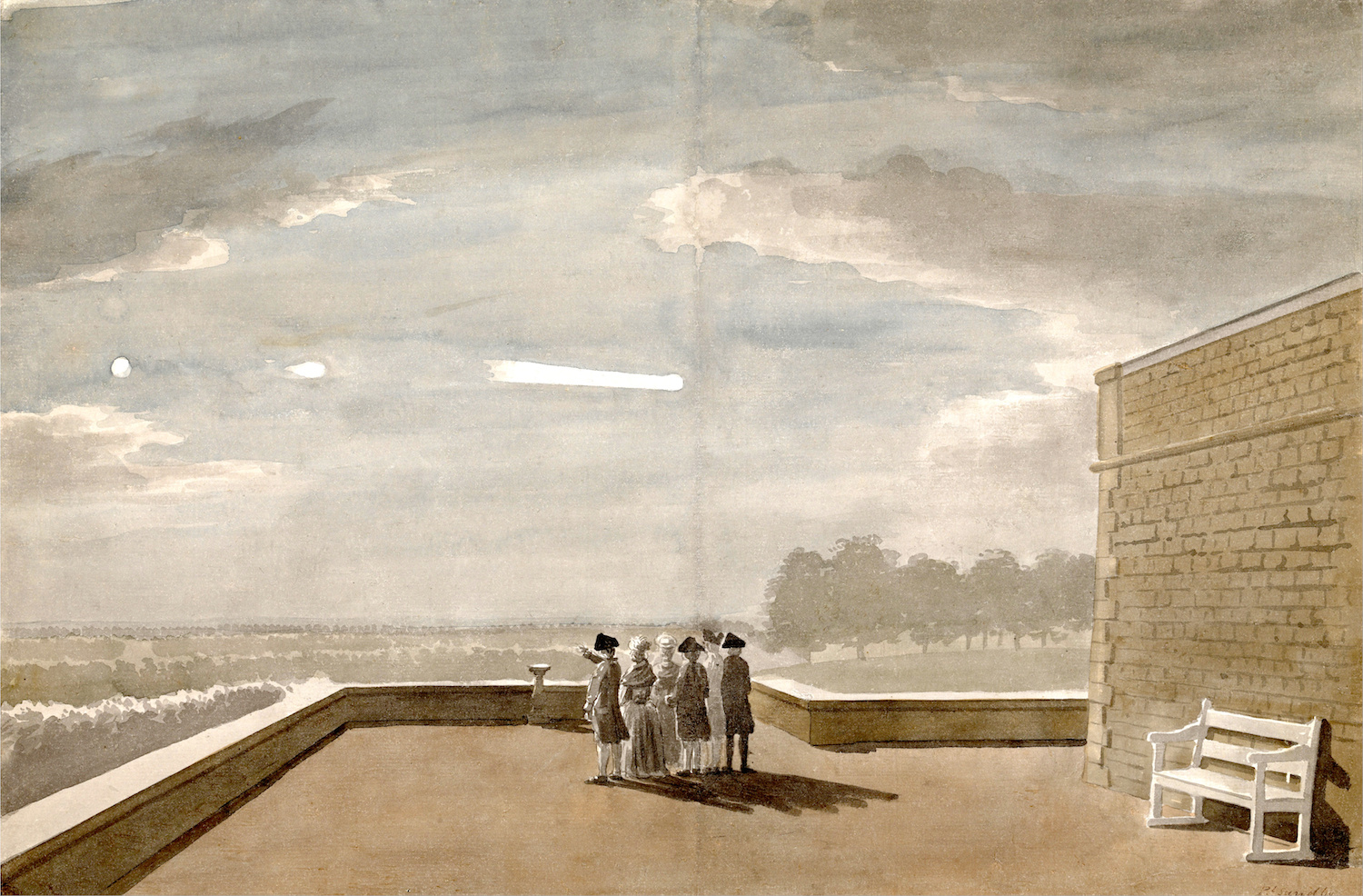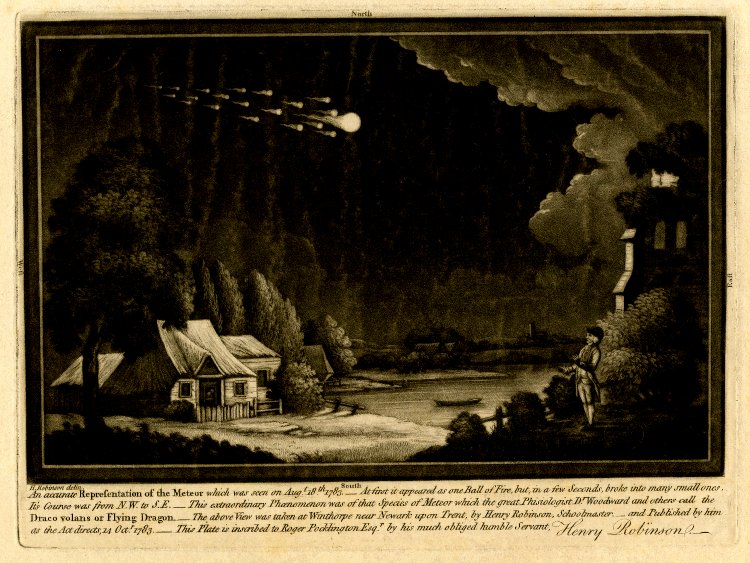【Watch New Son (2020) Korean movie】
Its Light Was Prodigious
Look

Paul Sandby, The 1783 Great Meteor, as seen from the East Angle of the North Terrace, Windsor Castle
As evidenced by its name, the 1783 Great Meteor was, yes, great and meteoric. At the time, not much else could be said about it with certainty—indeed, when it graced the skies of the British Isles 231 years ago today, it prompted a scientific (or pseudoscientific) crisis. Experts rushed to answer that burning—pun intended—question: What the hell was that?
On the night in question, Paul Sandby, a landscape painter, happened to be with Tiberius Cavallo, an Italian philosopher, hanging out on the terrace of Windsor Castle, enjoying the summer night, taking in the solemn spectacle of the sky, when, as Cavallo later wrote,
some flashes of lambent light, much like the aurora borealis, were first observed on the northern part of the heavens, which were soon perceived to proceed from a roundish luminous body, whose apparent diameter equaled half that of the moon, and almost stationary in the same point of the heavens … This ball at first appeared of a faint bluish light, perhaps from appearing just kindled, or from its appearing through the haziness; but it gradually increased its light, and soon began to move, at first ascending above the horizon in an oblique direction towards the east. Its course in this direction was very short, perhaps of five or six degrees; after which it directed its course towards the east … Its light was prodigious. Every object appeared very distinct; the whole face of the country, in that beautiful prospect before the terrace, being instantly illuminated.
I like the blend of specificity and awe here: Cavallo takes pains to describe the event as accurately as he can, but his account is suffused with the kind of wonder that only comes from confusion. How exciting it must’ve been, not knowing what was happening, not having the rote assurance of a scientific explanation. This was a time, after all, when one could still refer to the skies as “the heavens” without the slightest trace of irony.
In what amounts to an early example of crowdsourcing, artists and scientists came together to corroborate and dispute various accounts of the meteor. Sandby turned in an excellent watercolor of the phenomenon, and a schoolmaster named Henry Robinson made the engraving below. The meteor became the subject of wide speculation in the Philosophical Transactions of the Royal Society; London Magazineran an absurd account from a British lieutenant who claimed to have seen the meteor reverse its course, “moving back again, the contrary way to which it came.”







Related Articles